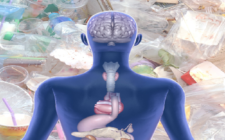Chiropractors treat a patient’s neuromusculoskeletal system, which consists of bones, nerves, muscles, tendons, and ligaments. A chiropractor helps treat back and neck discomfort by adjusting the spine to preserve proper alignment.
Chiropractic therapy focuses on the body’s ability to repair itself and also incorporates nutrition and exercise.
By increasing the performance of the neuromusculoskeletal system, chiropractors think spinal adjustment and joint realignment enhance the functioning of other systems in the body.
What is the role of a chiropractor?
Chiropractors examine patients by observing the posture of the spine and muscle reflexes. In addition, they conduct tests and may take x-rays to diagnose the patient’s ailment, formulate a treatment plan, and evaluate the patient’s progress.
Chiropractors do not prescribe pain medication. Instead, they support the body’s inherent capacity for self-healing. A chiropractor’s primary treatment is spinal manipulation. They use their hands or devices to apply force to a spinal joint, realigning it in a specified direction.
In addition to spinal manipulation, chiropractors may also employ the following treatments:
- Relaxment
- Stimulation
- Hot and cold therapy
- Exercise
- Diet and weight reduction guidance
Occasionally, chiropractors will use massage treatment, ultrasound, braces, and shoe inserts to alleviate discomfort.
What conditions are treated by a chiropractor?
Low back discomfort, neck pain, and headache are the most frequent reasons individuals seek chiropractic care. Chiropractic therapy is an effective pain management method and ensures the muscles’ healthy functioning around the joints.
Additionally, chiropractors can treat arthritic joint function. Depending on the kind of arthritis, a chiropractor may use gentle manipulation to enhance the range of motion and decrease muscular spasms.
Why should you visit a chiropractor?
Most individuals who do not want to take medication visit a chiropractor to manage or eliminate head, neck, and low back discomfort. However, there are more reasons individuals seek chiropractic treatment. They consist of:
- Preventing illness
- Increasing vitality
- Increasing immunity
- Fostering total wellbeing
Most patients require six to ten appointments with a chiropractor before seeing relief.
What to Anticipate from Your Chiropractor
Your initial appointment with the chiropractor will begin with an evaluation. You will likely be provided with a set of health-related questions to answer. In addition, your chiropractor may inquire about your migraine history, sleeping habits, nutrition, and level of physical activity.
You will also get a physical examination assessing your postures, muscular strength, arm and leg mobility, and anything unusual, such as a misaligned shoulder or hip.
Additionally, your chiropractor may take x-rays.
During Chiropractic Treatment
The majority of your chiropractor’s over 150 procedures involve gentle manipulation.
To access different regions of your body, your chiropractor may position you in various ways. However, you will often lie face down on a specially padded chiropractic table for adjustments. As a chiropractor uses controlled force to realign your spine or joints, you may hear popping and cracking sounds.
Your chiropractor may position you on a table with lower portions when pressure is applied to the patient’s back. An activator, a little gadget used for gentle manipulation, is another piece of equipment that your chiropractor may employ.
After a Chiropractic Treatment
Several days after your appointment, you may have a minor headache, lethargy, or discomfort in the treated regions.
In rare circumstances, following a chiropractic procedure, some individuals may encounter the following complications:
- Pinched nerves
- Disc herniation
- Stroke
However, the majority of individuals enjoy rapid alleviation and long-term health improvement. Your chiropractor can give you helpful information on proper posture when standing, sleeping, and working at a desk.
If chiropractic therapy does not help your pain or if it worsens, you should consult with your primary care physician. Contact your doctor if you have any unexpected symptoms, such as feeling weak or numb.




